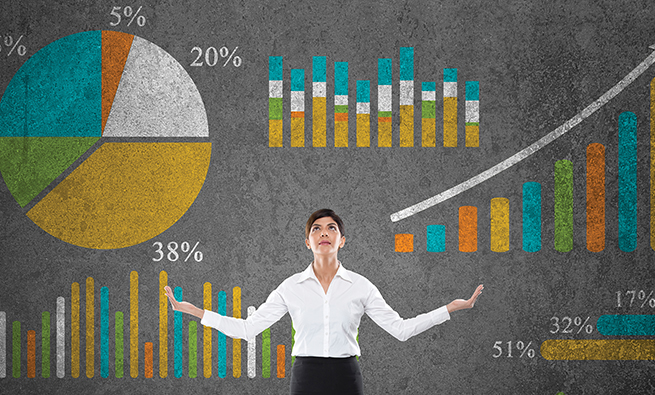Data storytelling
Hard data with a human narrative is data storytelling. It’s a skill in demand. It’s something to consider learning. Because it can be.
Good data storytelling makes a connection with your audience. Therefore, it promotes collaboration. Most importantly, it makes the decision-making process better and simpler with a much greater level of buy-in. All of which increases the value of the storyteller.
Here are 6 succinct steps to great data storytelling.
Know your audience
Your audience sets the tone for data storytelling and the data to use. In a Harvard Business Review article, “How to Tell a Story with Data,” Dell Executive Strategist Jim Stikeleather identifies five types of audiences: novice, generalist, management, expert, and executive. The novice is new to a subject but doesn’t want oversimplification. The generalist is aware of a topic but looks for an overview. Management seeks an in-depth, actionable understanding with access to detail. The expert wants more exploration and discovery and less storytelling. Finally, the executive needs to know the significance of conclusions.
Find your narrative in data storytelling
Just as with any good story, a data story has a beginning, a middle, and an end. It needs to be presented without bias and with the proper empathy and context. So, business users can absorb and leverage the insights for more intelligent decision-making.“If you want people to make the right decisions with data, you have to get in their head in a way they understand. Throughout human history, the way to do that has been with stories,” said Miron Kazakoff, an MIT Sloan lecturer who teaches Communications & Data.
Focus on the key insights
The most difficult skill to master in a data story is empathy — to understand where the audience is coming from and which parts of the data analysis they’ll react to. 74% of companies say they want to be “data-driven,” according to Forrester. But only 29% are actually successful at connecting analytics to insight. So, synthesize findings down to a core set of visuals that gets the point across in the most direct, succinct manner.
Pick the best chart types in data storytelling
Line plots are useful for visualizing the trend in a numerical value over a continuous time interval. They effectively capture the trends. Bar graphs are best to compare a few values within the same category. Pie charts show the proportional distribution of items within the same category. Scatter plots are useful for showing the relationship between two variables. Histograms are great for showing the distribution of data.
Use text boxes and arrows for emphasis
Keep headlines short. But add text and graphics to highlight what you want to emphasize. Data-driven advertising plays a major role in your marketing campaign A good story has descriptions. So does good data storytelling. So, add text boxes or arrows, or underlines to make sure your audience sees the point the data is making.
End with key learnings and action
The reason to tell a story with data is it simplifies complex subjects and leads to more intelligent actions. In today’s world, we are besieged with data but desperate for its meaning, People crave useful, valuable content that expands their knowledge, and helps them better navigate their world. Data storytelling allows us to extract and communicate insight through compelling stories.
Do these step help you understand how to be a better storyteller with data? Do you need help with data storytelling for your business?


